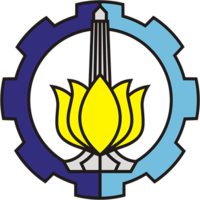Cost-Benefit Analysis of POME Biogas Power Plant: Case Study of PLTBg Suka Damai
Abstract
Palm Oil Mill Effluent (POME) is a byproduct of processing fresh palm fruit bunches into crude palm oil (CPO) which has negative externalities in the form of gas containing methane, carbon dioxide and other greenhouse gases (GHG) which is very dangerous for sustainability environment. The use of pome as feedstocks for biogas power plants (PLTBg) changes the negative externalities of pome into positive externalities such as increased electrification in the area around the palm oil mill (PKS) and also good for environmental sustainability. PLTBg Suka Damai with a capacity of 2.4 Mw is planned to reach the Commercial Operating Date (COD) in 2019, the financial calculation has a cost-benefit ratio of 1.19, percentage of Internal Rate of Return (IRR) of 12.84%, percentage of weighted cost of capital (WACC) 10% and a Net Present Value (NPV) of Rp 21,275,609,209.00. Using the cost-benefit analysis method, the authors calculate the positive externalities generated by PLTBg Suka Damai by comparing the value of benefits into three (3) alternative scenarios. The scenario I add the social cost of carbon (SCOC) as additional benefits; scenario II adds carbon credit income parameters from the REDD+ scheme; scenario III only utilizes the benefits of electricity sales and the electrification without adding additional benefits. Comprehending all the results, the first scenario with SCOC is the most optimize scenario for it provides far greater benefits to the community, far greater than the financial revenue received by the PLTBg itself.
Keywords
Full Text:
PDFReferences
Agus Suyono et al (2018) Kajian Tekno Ekonomi Upgrading Biogas Berbasis POME Dengan Teknologi Water Scrubber JTERA (Jurnal Teknologi Rekayasa), Vol. 4, No. 1, Juni 2019, Hal. 61-68
A. S. Rahayu et al (2015) Konversi POME Menjadi Biogas: Pengembangan Proyek di Indonesia, Winrock International.
Badan Pusat Statistik (2018) Statistik Indonesia 2018
Ditjen Perkebunan Kementrian Pertanian (2016) Statistik Perkebunan Indonesia 2015-2017: Komoditas Kelapa Sawit
Badan Kebijakan fiskal (2014) Analisis Biaya dan Manfaat Pembiayaan Investasi Limbah Menjadi Energi Melalui Kredit Program
Presiden Republik Indonesia (2017) “Peraturan Presiden Republik Indonesia No 22 Tahun 2017 tentang Rencana Umum Energi Nasional”
Dharmawan A.H et al (2016) Isu relevan kebijakan bioenergi dalam mendukung ketahanan dan kemandirian energi di Indonesia: state of the art. Working Paper No. 4/2016. Pusat Studi Pembangunan Pertanian dan Pedesaan, Institut Pertanian Bogor.
Kementrian Energi dan Sumber Daya Mineral (2017) Peraturan Menteri Energi dan Sumber Daya Mineral Republik Indonesia Nomor 50 Tahun 2017 Tentang Pemanfaatan Sumber Energi Terbarukan Untuk Penyediaan Tenaga Listrik.
Kementrian Energi dan Sumber Daya Mineral (2017) Peraturan Menteri Energi dan Sumber Daya Mineral Republik Indonesia Nomor 10 Tahun 2017 Tentang Pokok-Pokok Dalam Perjanjian Jual Beli Tenaga Listrik
Howard, P. H., & Sylvan, D. (2015). The Economic Climate: Establishing Expert Consensus on the Economics of Climate Change. Institute for Policy Integrity, 438-441.
Ricke, K et al (2018). Country-level social cost of carbon. Nature Climate Change, 8(10), 895.
Angelsen, A., Brown, S., & Loisel, C. (2009). Reducing emissions from deforestation and forest degradation (REDD): an options assessment report.
Agrawal, A., Nepstad, D., & Chhatre, A. (2011). Reducing emissions from deforestation and forest degradation. Annual Review of Environment and Resources, 36, 373-396.
Diyane Astriani Sudaryanti (2017) Analisis Ekonomi Pemanfaatan Palm Oil Mill Effluent (POME) Menjadi BioPower. Sekolah Pascasarjana Institut Pertanian Bogor
Donny Yoesgiantoro (2019) Battery Energy Storage System Sebagai Solusi Optimal Elektrifikasi di Wilayah Tertinggal, Terdepan dan Terluar : Analisis Biaya-manfaat
Asian development Bank (2010) Introductory Course on Economic Analysis of Investment Projects Session 3.3 Sensitivity and Risk Analysis
Tevfik F. Nas (1996) Cost-Benefit Analsis : Theory and Application. Sage Publication Inc.
Pricillia, S. A. (2014) Analisis ekonomi pemanfaatan fiber dan cangkang kelapa sawit menjadi energi listrik (studi kasus: PT. Bahana Karya Semesta, Kab. Sarolangun, Jambi). Departemen Ekonomi Sumberdaya dan Lingkungan, Fakultas Ekonomi dan Manajemen, Institut Pertanian Bogor.
Harihastuti, N ( 2015) Potensi Air Limbah Industri kelapa sawit (CPO) Sebagai Sumber Bioenergi Terbarukan. Semninar Nasional Pangan Lokal, Bisnis, dan Eko-Industri.
Direktorat Jenderal Perkebunan (2015) Pertumbuhan areal kelapa sawit (www.ditjenbun.go.id)
DOI: http://dx.doi.org/10.12962%2Fj24433527.v0i1.6775
Refbacks
- There are currently no refbacks.
This work is licensed under a Creative Commons Attribution 4.0 International License.





